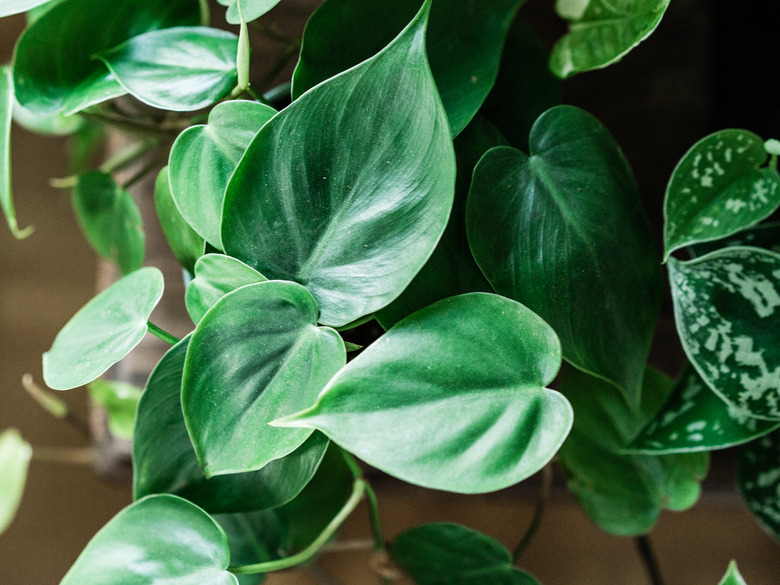Why Are My Philodendron Leaves Turning Yellow?
The Philodendron genus is loaded to the gills with species of beautiful foliage plants. Their leaves are their attraction: large, shiny, and brilliant green. They are very low-maintenance, tolerant plants that are easy to propagate, and they are always appearing on the "easiest houseplants to grow" lists. That makes it particularly disturbing when those tropical leaves start turning yellow.
Tip
Philodendron leaves turn yellow when they are not getting their basic needs met in terms of cultural care. This could mean too much or too little water or inappropriate light.
Meet the Philodendron
With the hundreds of species of philodendron out there, a uniform description is hard to craft. There are vining plants that require a trellis and self-heading (also called nonclimbing) plants with an upright growth habit. Most but not all leaves are green and shiny and look great in a hanging basket. The plant foliage is diverse, ranging from 3-inch heart-shaped green leaves to 3-foot oval green leaves with slices cut in them. Some philodendron leaves have soft, velvety patterns, and others are deep red.
Since philodendrons hail from tropical climes, most appear as houseplants in the United States, enjoying the mild temperatures of a home's interior, but some can be planted outdoors as tropical perennials in warm climates. Generally, the plants are healthy and vibrant, but if their very basic care requirements are not met, their leaves can yellow and fall.
Caring for a Philodendron
So, what are the basic care requirements for a philodendron? They need some sun and some water, and they are very specific about how much. This can vary between philodendrons that grown indoors as houseplants and those that grow outside.
Indoor philodendrons are quite tolerant when it comes to light. Most like to grow in bright, indirect light but will accept medium indirect light. Some species, like heart-leafed philodendron (Philodendron scandens) will do fine in low indoor light. Outdoor plants prefer partial or dappled sun but can grow in shade. Direct sun can burn their leaves.
When it comes to water, they are not drought-tolerant. Give them water whenever the top few inches of soil are dry. It is essential that excess water can drain, so clay soil is not a good choice.
Understand Yellowing Philodendron Leaves
Plants can't yell at you when you get it wrong, but they let you know loud and clear that things are not as they should be using their best feature: those lovely leaves. If, for example, you pot your philodendron in clay soil, its leaves will turn brown and wilt.
More often, philodendrons announce incorrect care through yellowing leaves. If you forget to water them, you'll see at least one leaf turning completely yellow. If you don't resolve this cultural care issue quickly, other leaves will follow. Similarly, if you site them in a windowless room, they will soldier on for a time, but ultimately, their leaves will start yellowing. Remember that they can handle low light, not no light. Too much light can also result in leaves turning yellow.
There is another cause of yellowing leaves: aging. Think of occasional yellow leaves as the gray hairs of a mature plant. This only applies if one or two leaves are yellow. If half of the leaves are yellow, check the other issues.
